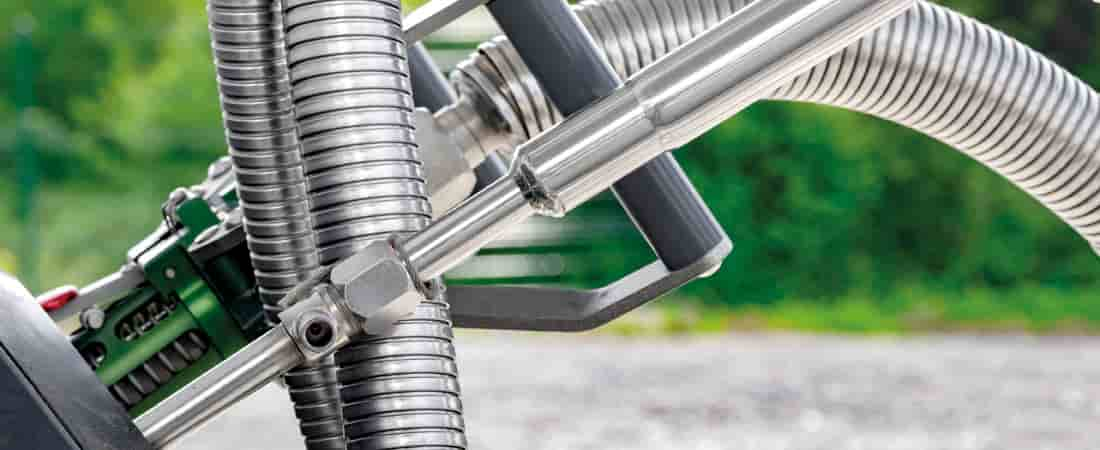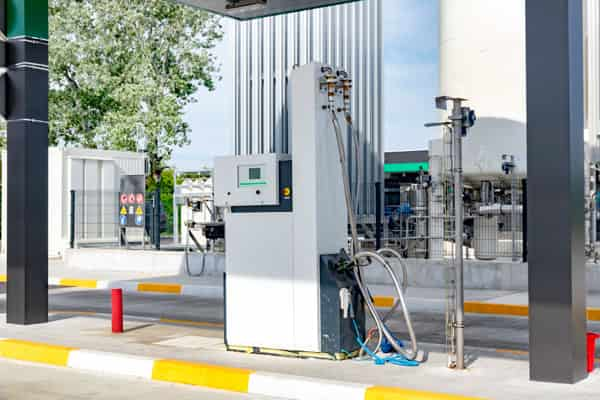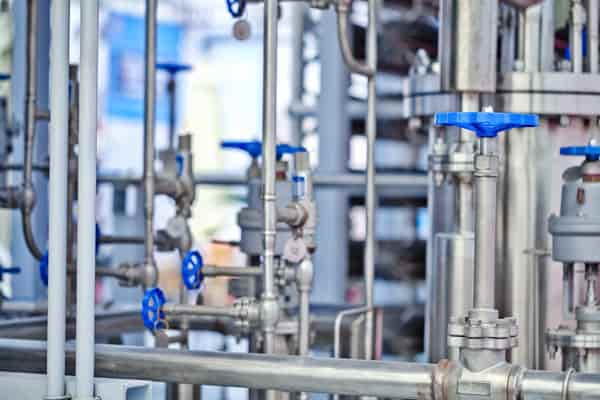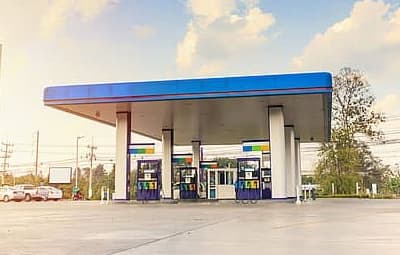LNG
Liquefied Natural Gas

LNG - fuel of the future?
UTA Edenred is there for you!

Liquified natural gas (LNG) is created when natural gas is cooled to -162 °C . Compared to regular natural gas, LNG has the advantage of lower volume. This makes storage and transport from the LNG terminal to fuel stations simpler. Furthermore, it costs significantly less than diesel.
Environmental aspects of LNG
Opinions differ on the environmental impact of LNG. While some studies indicate that LNG vehicles emit more NOx, others underscore LNG's environmental credentials. One thing is certain: Compared to diesel-burning vehicles, LNG CO2 emissions are lower, and the vehicles are quieter.
However, like compressed natural gas (CNG), LNG is primarily comprised of methane, a substance that is more damaging to the climate than CO2 (in contrast to LPG, or liquefied petroleum gas, which is made up of propane and butane). Both types of gas thus present additional challenges for engine management and emissions technology. Under certain operating conditions, 1-2% methane can escape into the atmosphere, which must be prevented at all costs. In the context of achieving climate-neutral road transport, European officials are generally positive about the fuel produced from methane.
Toll exemptions and subsidies for LNG heavy goods vehicles
Since the EU classifies LNG and CNG vehicles as being environmentally friendly, they are toll exempt up to 2023. This is an important step in stimulating demand for LNG fuel in particular. For haulage companies thinking of transitioning to LNG, there's another consideration: he German Federal Ministry of Transport is currently offering attractive lump-sum subsidies for the purchase of environmentally friendly vehicles.


Market potential for LNG
It will be some time before LNG is universally available. LNG fuel stations are not yet prevalent in Europe. In Germany, there are currently about 30 stations. But the EU is pushing for that number to increase. It plans to subsidise additional LNG fuel stations along Europe's main road transport arteries. Demand, meanwhile, is on the rise: Current forecasts are that 25,000 HGVs powered by LNG will be on our roads in the year 2025. It's anticipated that 200 LNG fuel stations will be ready to meet the increased demand.
UTA Edenred is closely following the development of the LNG market. New supply sources will continue to be added to its service network.
LNG: The facts
By supercooling LNG, its volume can be reduced by a factor of 600. It is therefore much more compressible than standard compressed natural gas (CNG), and contains significantly more energy.
Almost 100% of goods today are transported by diesel-powered vehicles. Natural gas in liquid form is a compelling alternative. LNG offers comparable performance to diesel but boasts lower noise and emissions. Thanks to a higher energy content and lower fuel consumption, a LNG-powered HGV can achieve major cost reductions in comparison with a standard diesel vehicle. That makes liquefied gas an attractive proposition.
How much does LNG cost?
In addition to the price of the natural gas itself and the liquification process, LNG costs include transport (tanker and tanker HGV) and fuelling. The market for LNG parallels that of gas and oil. Currently, the price of 1 kg of LNG is about 85 cents.
Liquefied natural gas in fleet use
For hauliers and freight forwarders, operating costs are critical. And that's where LNG shines, since fuel costs for LNG vehicles are lower than diesel. This advantage is likely to hold as global LNG production capacity builds, making LNG easier and more efficient to use.
HGVs need slight modifications to run on LNG. The LNG system, based on a dual-fuel motor, is constructed such that two LNG fuel tanks are installed between the front and rear axles of an HGV prime mover. Pollutants are scrubbed from the exhaust (not using AdBlue). The two-tank system allows the storage of enough LNG that vehicle range is comparable to that of diesel HGVs. Demand for LNG powerplants will also increase, further decreasing purchase costs and making LNG a competitive alternative to diesel.



